
Inhaltsverzeichnis:
- Autor Sierra Becker [email protected].
- Public 2024-02-26 04:43.
- Zuletzt bearbeitet 2025-01-22 22:11.
Was ist ein CPL-Polfilter? Dies ist ein wertvolles Accessoire, das jeder Fotograf in seiner Tasche haben sollte. Wie wirkt sich ein Polarisator auf ein Bild aus? Um eine Intuition zu diesem Punkt zu entwickeln, muss oft lange experimentiert werden. In diesem Artikel erfahren Sie, wie Sie diesen Prozess beschleunigen können, wie und wie dieses Produkt die Aufgabe in verschiedenen Situationen einfacher (und manchmal schädlich) machen kann.
Wo ist der CPL-Filter angebracht? Es befindet sich immer vor der Frontlinse des Objektivs. Wie funktioniert dieses Gerät? Es filtert direkte Reflexionen des Sonnenlichts in bestimmten Winkeln. Dies ist nützlich, da anderes Licht oft farbreicher und diffuser ist. Das Arbeiten mit diesem Gerät erfordert auch eine längere Verschlusszeit (da einige Strahlen abgelenkt werden). Der Filtrationswinkel wird durch Drehen des Geräts gesteuert. Vom Finden der Sichtlinie der Kamera relativ zur Sonnehängt von der Stärke des Effekts ab.
Filterrotation
Wann kann ich mit dem CPL-Filter die maximale Wirkung erzielen? Nur wenn die Blickrichtung der Kamera senkrecht zum Sonnenlicht steht. Sie können sich das vorstellen, indem Sie mit dem Zeigefinger auf die Sonne zeigen, während Sie den Daumen im rechten Winkel dazu platzieren. Wenn Sie Ihre Hand drehen, um auf die Sonne zu zeigen, bestimmt die Richtung, in die Ihr Daumen zeigt, die Linie mit dem höchsten Polarisatoreffekt.
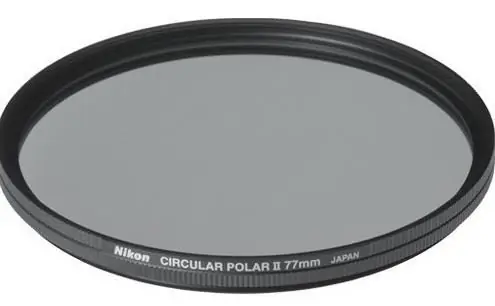
Die Tatsache, dass der CPL-Filter in diesen Richtungen das beste Ergebnis liefert, bedeutet jedoch nicht unbedingt, dass er in diesen Richtungen am stärksten auffällt. Während seiner Rotation erscheint die Grenzpolarisation, die den Winkel relativ zum Tageslicht ändert. Um ein Gefühl dafür zu bekommen, wie der Filter funktioniert, drehen Sie ihn am besten, während Sie auf das Display oder den Sucher der Kamera schauen.
Die Verwendung eines Weitwinkelobjektivs kann zu schlechten Ergebnissen führen, da der Polarisationseffekt je nach Winkel variiert. Ein Teil des Bildes kann im rechten Winkel zur Sonne und der andere zu ihr hin platziert werden. In diesem Fall ist der Polarisationseffekt auf einer Seite des Fotos nicht wahrnehmbar und auf der anderen Seite sichtbar.
Offensichtlich sind Weitwinkelobjektive nicht perfekt. Die Wendungen des "Polars" können jedoch manchmal den Effekt vitaler machen. Sehr oft platzieren Profis die ausgeprägteste Polarisationswirkung näher am Rand oder in der Ecke des Bildes.
Beschreibung
Fotografen verwenden zwei Arten von Filtern, um qualitativ hochwertige Bilder zu erstellen: mitlineare Polarisation und zirkular. Diese Geräte isolieren und isolieren Bereiche, die reich an polarisiertem reflektiertem Licht sind. Mit ihrer Hilfe können Sie bei Aufnahmen von unten grelle Blendung herausfiltern oder die Landschaft vor dem Fenster ohne Ihr eigenes Spiegelbild im Glas einfangen.
Linearfilter erfüllen eine einfache Aufgabe - sie übertragen modifiziertes Licht in einer einzigen Ebene. Geräte mit zirkularer Polarisation ermöglichen den Zugang zu kreisförmig modifizierten Strahlen. Sie verwandeln jede Strahlenbrechung in eine sphärische. Tatsächlich stört der kreisförmige "Polarisator" den Autofokus nicht, ermöglicht es Ihnen, die Belichtung richtig zu erraten, und kann auf allen Kameras (einschließlich alten) installiert werden.
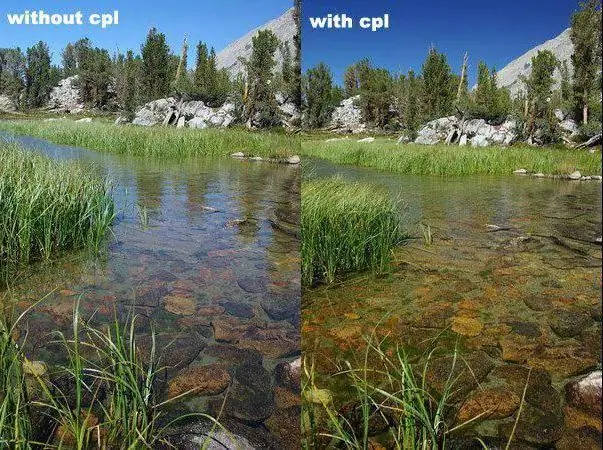
In diesem Fall wird eine übermäßige Blendung wie bei einem Gerät mit linearer Polarisation eliminiert. CPL-Filter geben eine "reine" sphärische Lichtbrechung nur bei einer bestimmten Wellenlänge. In einer Wellenplatte beträgt der optische Unterschied in ihrem Weg zwischen dem einfachen und dem außerordentlichen Strahl genau ein Viertel ihrer Länge. Bei allen anderen Wellenlängen zeigt dieses Gerät einen elliptischen Effekt.
Rundfilter sind schwieriger als andere, also kosten sie mehr. Auf der Außenseite dieses Geräts befindet sich ein herkömmliches lineares Gerät und auf der Innenseite eine Viertelwellenplatte, die lineare Polarisation in sphärische umwandelt.
Foto
Polarisationsfilter für die Kamera sind Geräte, die entwickelt wurden, um unerwünschte Effekte (Reflexionen, Blendung) zu eliminieren, die Helligkeit (bei gleichzeitiger Erhöhung der Sättigung) des Himmels zu verringern und andereObjekte, um ästhetische Ziele zu erreichen. Sie sehen aus wie gewöhnliche Filter, haben aber gleich dicke Vorder- und Hinterteile, die sich frei drehen können.
Wie wird der CPL-Filter angewendet? Wozu dient dieses Gerät? Seine Rückseite wird mit dem Objektiv verschraubt und der gewünschte Effekt wird durch Drehen der vorderen Hälfte in einen beliebigen Winkel ausgewählt. Das vordere Segment kann mit einem Innengewinde ausgestattet werden, mit dem ein Objektivdeckel, eine Gewindehaube oder andere Filter befestigt werden können, was ein unwiderlegbarer Pluspunkt ist.
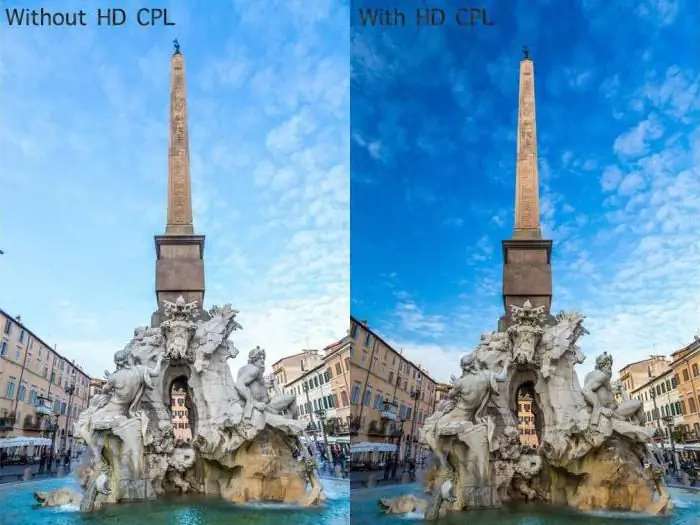
Verschiedene Segmente von reflektierenden Objekten können eine Reflexion mit unterschiedlichen Polarisationswinkeln ergeben, die nicht von einem Filter synchron unterdrückt werden können. Außerdem kann sich im Rahmen eine große Anzahl von Gießobjekten befinden. In solchen Fällen werden mehrere hintereinander verdrillte Polfilter verwendet, die alle bis auf den hinteren linear polarisiert sein müssen. Dies ist notwendig, da der im Rundfilter platzierte optische Kompensator verhindert, dass andere Geräte, die möglicherweise dahinter platziert sind, den Effekt erzielen.
Wofür ist ein polarisierender Linsenfilter sonst noch berühmt? Seine optische Dichte liegt üblicherweise im Bereich von zwei bis fünf. Es kann zu Farbverzerrungen kommen. Generell haben einige Geräte im lila-blauen Bereich einen Abfall von bis zu einer Blende, wodurch das Bild grünstichig wird. Billige Geräte können kleine Details widerlich wiedergeben. "Polyarik" ist zusammen mit einem "schützenden" UV-Sperrfilterdas am meisten genutzte Gerät in der Fotografie.
Details
Üblicherweise wird ein Polarisationsfilter in Form von zwei Platten aus Glas hergestellt. Dazwischen liegt ein Polaroidfilm mit linearem Dichroismus. Dieses Detail ist eine Art Schicht aus Acetylzellulose, die eine beeindruckende Anzahl kleinster Mikrolithen aus Herapatit (der Jodidverbindung von Chininsulfat) enthält.
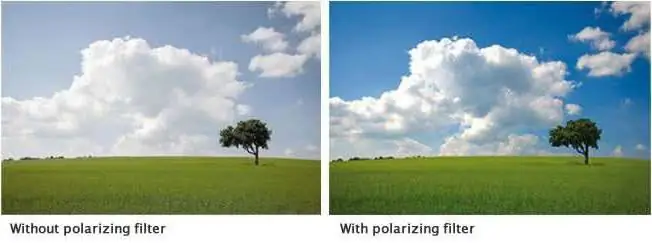
Solche Polyvinyl-Jod-Folien mit synchron orientierten Polymerketten werden verwendet. Die Orientierung der Mikrolite ist aufgrund des elektrischen Feldes identisch und die Polymerketten werden durch mechanische Spannung geführt. Der Rundfilter ist außerdem mit einem optischen Kompensator ausgestattet - einer Viertelwellen-Phasenplatte. Mit diesem Teil können Sie den Unterschied im Weg der beiden Starts der Strahlen bestimmen. Es funktioniert nach dem Phänomen der Doppelbrechung von Licht in Kristallen.
Transformation des Lichts
Der einfache Strahl und der außergewöhnliche Strahl haben unterschiedliche Geschwindigkeiten. Auch ihre optischen Weglängen sind nicht gleich. Daher erwerben sie eine Bewegungsdifferenz, gemessen durch die Dicke des Kristalls, durch den sie hindurchgehen. Er wird entlang des Strahlengangs hinter dem Polarisator eingebaut und dreht sich bei der Montage, bis seine Schwingungsachsen mit den optischen Achsen zusammenfallen.
In dieser Position wandelt die Viertelwellenplatte linear polarisiertes Licht in zirkular polarisiertes Licht um (und umgekehrt), wodurch der Gangunterschied auf 90 Grad erhöht wird. Mit solchen Merkmalen werden alle "Polare" hergestellt. Der Unterschied in Preis und Qualität ist darauf zurückzuführenzusätzliche Schichten: schützend, entspiegelt, wasserabweisend.
Aussehen
Wann wurde der Polarisationsfilter für das Objektiv entwickelt? Dieses Produkt entstand aus der Entwicklung von Automatisierungselementen für TTL-Kameras, die im Gegensatz zu fotografischen Materialien von der innovativen Belichtung abhängig wurden.
Im Allgemeinen erschwert linear polarisierte Strahlung die Messung und stört bei SLR-Kameras teilweise die Funktion der automatischen Phasenfokussierung.

In der Astronomie sind "Polarisatoren" Teil von Geräten, die die kreisförmigen und linearen Änderungen im Licht von Objekten im Weltraum untersuchen.
Polarisationsüberwachung ist die grundlegende Methode, um Informationen über die Stärke des Magnetfelds in Bereichen der Strahlungserzeugung zu erh alten, beispielsweise auf Weißen Zwergen.
Nikon CPL

Der Nikon 52 mm CPL-Polarisationsfilter ist ein wertvoller Artikel für den Landschaftsfotografen und für diejenigen, die hochwertige Bilder erh alten möchten. Es gibt mindestens sechs Gründe, warum Sie dieses Produkt kaufen sollten:
- Zum Fotografieren von Wasser (es wird dunkler und transparenter).
- Aufnahme einer Landschaft (die "Sättigung" von Grün und Himmel nimmt zu).
- Für Aufnahmen in einem Winkel durch ein Fenster (um Blendung und Reflexionen durch das Glas zu eliminieren).
- Beseitigung von Reflexionen an einem sonnigen Tag (von Wasser, Glas, Auto).
- Erhöhen Sie die Verschlusszeit um ein paar Stufen (falls erforderlich).
- Objektivschutz gegenmechanische Einwirkung.
Kaufen Sie diesen Filter für diejenigen, die in warme Länder reisen - dies ist ein unverzichtbarer Helfer beim Erstellen farbenfroher Fotos. Bei hellem Sonnenlicht verbessert dieses Gerät die Bildqualität, indem es Kontrast und Sättigung erhöht und gleichzeitig Dunst beseitigt.
Einschränkungen
Diejenigen, die lernen wollen, wie man gute Bilder macht, nehmen Fotounterricht bei Profis. Wie verwende ich einen Polarisationsfilter? Das Gerät mit dem gewünschten Durchmesser muss auf das Kameraobjektiv geschraubt werden. Durch Drehen des Kristalls im Filter müssen Sie den gewünschten Polarisationsgrad auswählen, der es Ihnen ermöglicht, Blendung durch Wasser oder Glas beim Fotografieren zu eliminieren und flauschigere und weiße Wolken sowie einen gesättigten Himmel zu erh alten.
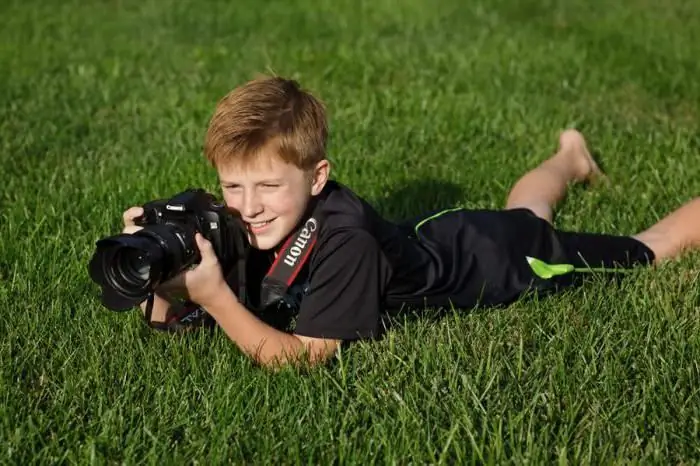
Es gibt einige Einschränkungen bei der Verwendung solcher Geräte:
- Beim Drehen des Polarisationsfilters muss berücksichtigt werden, dass der zu erwartende Bereich der Begrenzungswirkung etwa 90 Grad von der Primärposition entfernt liegt. Wenn das Gerät um 180 Grad gedreht wird, wird durch dieses Manöver das Bild in seinen ursprünglichen Zustand zurückgesetzt.
- Polare schwächen die Lichtmenge ab, die durch das Objektiv in den Sensor der Kamera eintritt, sodass Profis die Belichtungsbalance oft um 1-2 Stufen erhöhen.
Fehler
Fotokurse sind für Anfängerfotografen unerlässlich, um qualitativ hochwertige Bilder zu erstellen. Wir haben festgestellt, dass Polarisatoren sehr nützlich sind. Leider haben sie folgende Nachteile:
- Aufgrund dieses Geräts kann die Belichtung in 4-8 nach mehr Licht verlangenmal (2-3 Schritte) als üblich.
- Sie brauchen einen bestimmten Winkel zur Sonne, um die besten Ergebnisse zu erzielen.
- Mit diesen Filtern ist es schwierig, durch den Sucher der Kamera zu navigieren.
- Dies sind einige der teureren Geräte.
- Sie erfordern eine Rotation und können daher die Kompositionszeit verlängern.
- Normalerweise nicht verfügbar für Weitwinkel- und Panoramaaufnahmen.
- Ein verschmutzter Filter kann die Bildqualität beeinträchtigen.
Darüber hinaus sind manchmal Spiegelungen in einem Foto erforderlich. Die auffälligsten Beispiele sind hier Regenbögen und Sonnenuntergänge. Wenn Sie einen Polarisator auf einen von ihnen auftragen, können farbige Reflexionen vollständig verschwinden oder verblassen.
Weitere Empfehlungen
Kamerafilter sind komplexe Geräte. Aber mit der Zeit kann man lernen, mit ihnen zu arbeiten. "Polarik" kann manchmal verwendet werden, wenn es notwendig ist, die Belichtungszeit zu verlängern. Da es das durchgelassene Licht 4-8 Mal (2-3 Stopps) schneiden kann, kann es Wasser und Wasserfälle einfangen.
Setzt man einen Polfilter auf ein Weitwinkelobjektiv, kann es zu einer starken Abdunklung der Bildränder ("Vignettierung") kommen. Um dies zu vermeiden, müssen Sie wahrscheinlich eine „dünnere“und teurere Option kaufen.
Zirkulare Polarisatoren wurden entwickelt, um den Autofokus und die Messsysteme der Kamera bei eingesch altetem Filter am Laufen zu h alten. Lineare "Polare" sind viel billiger, aber sie können nicht mit den meisten digitalen SLR-Kameras verwendet werden (da sie Phasenerkennungs-Autofokus und TTL-Messung verwendendurch die Linse).
Empfohlen:
Schöne und originelle Röcke für Mädchen mit Stricknadeln (mit Beschreibungen und Diagrammen). Wie man einen Rock für ein Mädchen mit Stricknadeln strickt (mit einer Beschreibung)

Für eine Handwerkerin, die mit Garn umgehen kann, ist es kein Problem, einen Rock für ein Mädchen mit Stricknadeln (mit oder ohne Beschreibung) zu stricken. Wenn das Modell relativ einfach ist, kann es in nur wenigen Tagen fertiggestellt werden
Wie macht man Origami? Origami-Unterricht für Anfänger

Origami-Unterricht mit einem Kind kann bereits im Alter von 3-4 Jahren begonnen werden. Für Kinder ist es am interessantesten, Spielzeug herzustellen, daher widmen wir unseren Artikel dem Studium der einfachsten Schemata, die Kinder machen können. Eltern können sich auch im F alten von Papierfiguren versuchen, um später ihren Kindern ein Muster zu zeigen. Wie man Origami macht, wird in den Diagrammen detailliert gezeigt, und Schritt-für-Schritt-Anleitungen helfen Ihnen, die Aufgabe richtig zu erledigen
Origami-Unterricht: Wie man einen Papierfrosch macht

Origami ist die japanische Kunst, Papierfiguren ohne Klebstoff zu f alten. In diesem Artikel haben wir eine Schritt-für-Schritt-Anleitung zum Erstellen eines springenden Frosches bereitgestellt
Wir stricken Fäustlinge mit Stricknadeln - wir schaffen Schönheit mit Mustern oder mit einem Muster
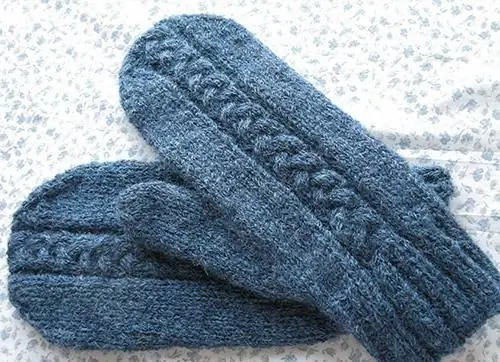
Fäustlinge sind im Gegensatz zu so großen Dingen wie Pullovern, Kleidern, Pullovern viel schneller gestrickt und es wird weniger Wolle benötigt. Diese kleinen Produkte können jedoch sehr schön gemacht werden, wenn man in sie Fantasie und ein wenig Ausdauer investiert. Wir stricken Fäustlinge mit Stricknadeln und tragen sie dann gerne
Samodelkins Unterricht: Bastelarbeiten aus improvisiertem Material

Nehmen wir an, du bist im Park spazieren gegangen und hast ein paar Zapfen oder Kastanien gefunden. Nehmen Sie sie mit nach Hause und heben Sie gleichzeitig Zweige vom Weihnachtsbaum auf (es liegen viele davon um den Baum herum - Vögel pflücken oder der Wind schneidet ab), Zweige und im Allgemeinen solchen „Müll“, den Sie vielleicht haben brauchen. Mit ihrer Hilfe erh alten Sie aus improvisiertem Material hervorragendes Kunsthandwerk mit Ihren eigenen Händen
